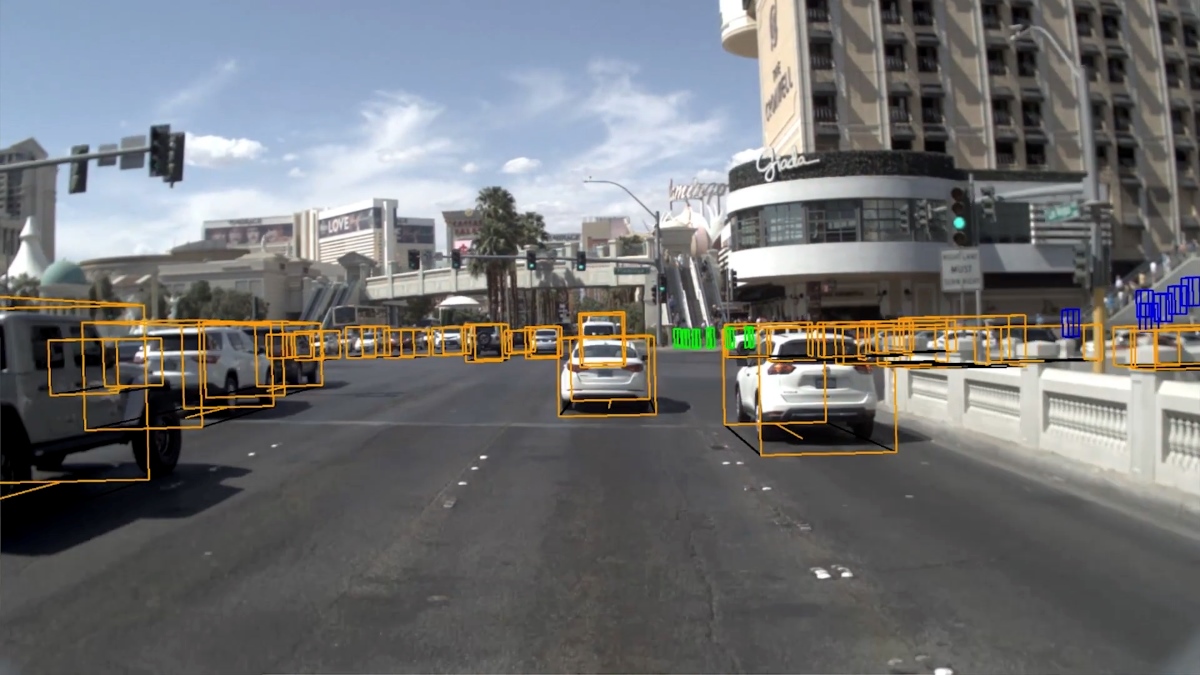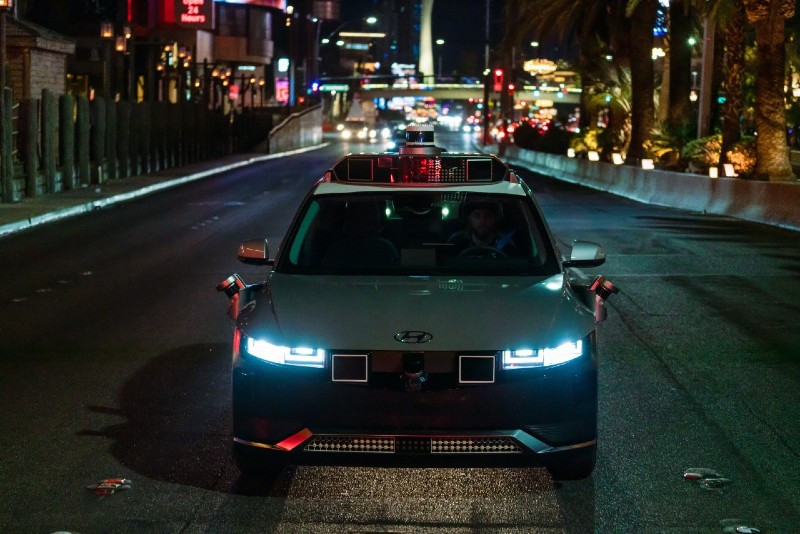#DriverlessEd aims to teach consumers about autonomous vehicles (AVs), everything from the driverless technology that powers them, to the rigorous safety practices and the rider experience.
Be sure to explore the previous chapters:
Chapter 1: Why Driverless Vehicles?
Chapter 2: The Difference Between AVs and ADAS
Long-term adoption of AVs requires the technology to be rider-friendly, as well as safe.
Autonomous vehicle (AV) technology has evolved to the point where some driverless cars and trucks can safely navigate everyday traffic and deliver passengers from Point A to Point B.
AVs represent nothing less than an incredible technological achievement decades in the making and the arrival of a revolution in transportation. But for robotaxis – an AV built for ride-hail passengers – to live up to their lofty promise, they have to be more than just technological marvels. People may first ride in a robotaxi out of curiosity. But if they’re confused about any part of the process, or don’t enjoy the experience, then the passenger next time may opt for what’s most familiar - a vehicle driven by a human.
Companies like Motional aren’t just developing the technology needed to allow robotaxis to operate safely on a public road. Teams of engineers and scientists have also been busy researching how to make robotaxis something people will choose to make part of their daily lives. This effort touches on understanding what makes a ride comfortable, the types of features and ease-of-use passengers expect, how to design a vehicle accessible to all, and even figuring out ways the vehicle can communicate with people through what’s known as expressive robotics.
The better that AV companies understand these dynamics, the faster passengers will adopt AVs.
RIDING IN COMFORT
When we take a ride-hail, a taxi, or even a lift from a friend, one challenge is adjusting to someone else’s way of driving. Even if the other driver is technically operating in a safe manner, we can find ourselves gripping the door handle a bit tighter, or maybe even asking them to slow down.
Companies like Motional, where safety is a core mission, program their AVs to strictly follow the rules of the road: obey the speed limit, stop at stop signs, don’t tailgate, wait for pedestrians in a crosswalk. But a safe ride doesn’t necessarily equal a comfortable ride.
If an AV consistently jerks to a stop, takes sharp turns, or taps its brakes repeatedly, the passenger may decide the lack of comfort outweighs the safety of the ride and choose a human driver next time. Passengers may be even more sensitive to ride comfort when there isn’t a human behind the wheel they can voice any concerns to.
The long-term success of AV companies depends upon people wanting to take a robotaxi more than once. So customers need to feel comfortable riding in an AV.
Ride comfort depends on understanding the impact vehicle performance has on passengers, such as when the vehicle makes too sharp of a turn or stops too fast.
A Motional team has been charged over the past couple years with understanding what makes a ride “comfortable.” That includes aspects such as how fast a robotaxi should accelerate when a traffic light turns green, or how sharp it should take a turn, or how close to a row of parked cars the AV can maneuver.

One approach employed by Motional is to have team members log bumps, jolts, and uncomfortable moments during test rides. Because every meter an AV travels is logged, engineers can then go back, identify what caused those bumps and jolts, and refine the computer models that control the vehicle. And as commercial passenger service starts, Motional can use feedback from riders to make the ride even more comfortable.
A FAMILIAR EXPERIENCE
One obstacle to new technology adoption is a poor user experience. Maybe you’ve gone to a new website, downloaded a new app, or tried a household appliance that just didn’t make sense or felt awkward to use, and you never used it again.
People have been hailing cabs for a century now, and using ride-hail apps for more than a decade. The routine of getting in the vehicle and starting the ride is something we’re familiar with. However, much of that process involves communicating with the person behind the wheel.
Part of the process of developing a robotaxi is figuring out how to meet the rider’s needs without a human driver. How does a passenger confirm it’s their ride, start the trip, communicate a change in plans, voice a concern, and then end the ride?
Companies like Motional have a team of engineers and scientists evaluating these interactions and putting together features that make the process of taking a ride-hail still feel familiar and intuitive. Instead of asking the driver if it’s their ride, passengers can look for an LED identifier, or have the robotaxi flash its lights. Riders can use the smartphone app to tell the vehicle to open its doors or pop the trunk for luggage. Passengers without a smartphone - maybe the battery died - can use a speaker on the vehicle exterior to contact remote customer assistance.
A pair of screens on the back of the seats will help the passenger get ready to start the ride. The screens will contain ride information - such as the route map and estimated time of arrival - and help explain why the vehicle is making certain decisions. Passengers can also use the screens to request the vehicle pull over, or to change the final destination. Everything about these features - such as wording, formatting, and even colors - are all based on feedback from passenger behavior research.
DESIGNING FOR ALL
Millions of Americans have disabilities that limit their ability to travel. By designing robotaxis that are safe, reliable, and accessible, we can help improve mobility for those with physical, sensory, or cognitive disabilities.
Motional, for example, has been working with the Institute for Human Centered Design to identify ways to build for everyone. When researching how to assist those with visual impairments, Motional product designers learned that only a small portion of that population uses braille, and that raised, distinctive shapes on hard buttons would be a better option. There are also microphones and speakers on the vehicle’s exterior and the interior cabin so that remote customer assistance teams can provide verbal assistance.
EXPRESSIVE ROBOTICS
If you’ve driven a car, you’ve likely given “the wave.” It’s the little hand gesture drivers give at an intersection to let the other driver know they can go first. Sometimes it isn’t even a wave; just some eye contact. Same goes for pedestrians; they arrive at a crosswalk the same time as a vehicle and one of them gives a permissive hand wave indicating it’s safe to proceed.
Non-verbal communication is an important way human drivers and pedestrians stay safe on roadways. But with AVs, and robotaxis, there will be no other human to make eye contact with or give that wave to.
Expressive robotics is one avenue AV engineers and scientists are exploring to help driverless vehicles communicate intent to other drivers and passengers. It could be a flash of the headlights, a flicker of an external LED strip, or maybe a movement of the vehicle itself.
Motional, for example, created its nuReality dataset to research what vehicle actions best communicate intent to pedestrians. The dataset includes a realistic VR scenarios that simulate an AV approaching a crosswalk. The research subject needs to interpret the vehicle’s intent based on its actions, which includes an exaggerated dip of the nose as it decelerates, revving engine sounds, or light signals.
Incorporating the most clear, expressive signals into an AV will not just improve safety, but also increase trust between humans and driverless vehicles.
CONCLUSION
The technological superhighway is littered with memories of highly innovative products that just didn’t catch on among consumers: desktop operating systems, handheld devices, online retail shops. Some were too complex, some too unfamiliar, others too unintuitive.
That’s why AV companies such as Motional aren’t just focused on making sure a driverless vehicle can safely navigate the road. They are also carefully researching how they can make the vehicles comfortable, familiar, accessible, and easily understood. Doing this right will drive consumer adoption and produce a product that changes how the world moves.

